
We’ve had the pleasure of visiting several 3D print services over the years and today we’re adding another to the list: Digits to Widgets Studios.
The London-based bureau is run by the eloquent Jonathan Rowley (above), who seems to find very creative ways to keep his 3D printers producing some of the most amazing prints we’ve yet seen.

D2W operates multiple 3D printers, including the capability to 3D print full-color objects, but it appears they focus primarily on 3D printed nylon using their fleet of EOS Formigas. Currently most of their clients are European, but they’ve recently added some North American clients, who prefer D2W’s extremely rapid service. We think their speed might have something to do with their unique pricing structure, which encourages users to prepare optimally packed files while simplifying the work of D2W.
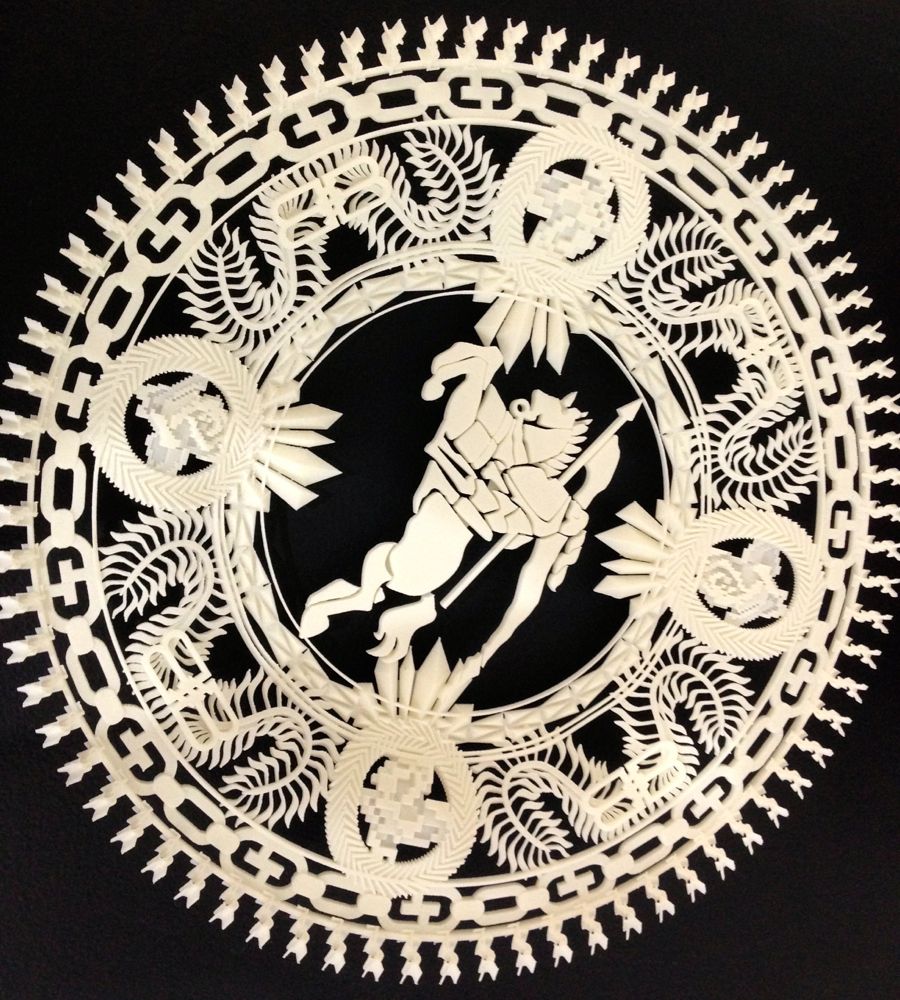
In the entryway of the studio, Rowley has prepared a series of displays to “wow” visitors, some of whom might be new to 3D printing. Here we see one of several amazing 3D printed pieces on display.
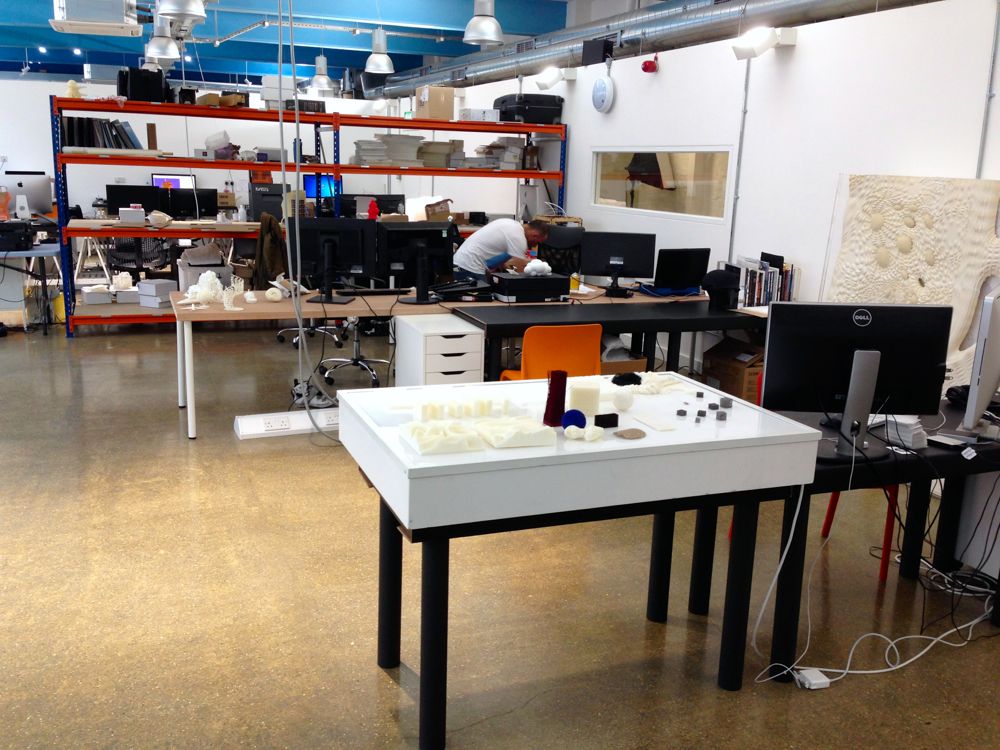
In a brilliant move, Rowley allocated spare space in the rear of the workshop as “co-space”. The brilliant part is that the users of the co-space must be working on 3D-related work. This ensures not only that the D2W fleet is kept busy, but it generates a nexus of advanced 3D design.

Out of this nexus are many amazing developments that seem to push 3D design for printing to the absolute limit. Here we see a selection of fabrics created by 3D printing. No, these are NOT flexible materials. They’re simply arrays of complex microstructures joined together. The result is materials that act very much like fabric.
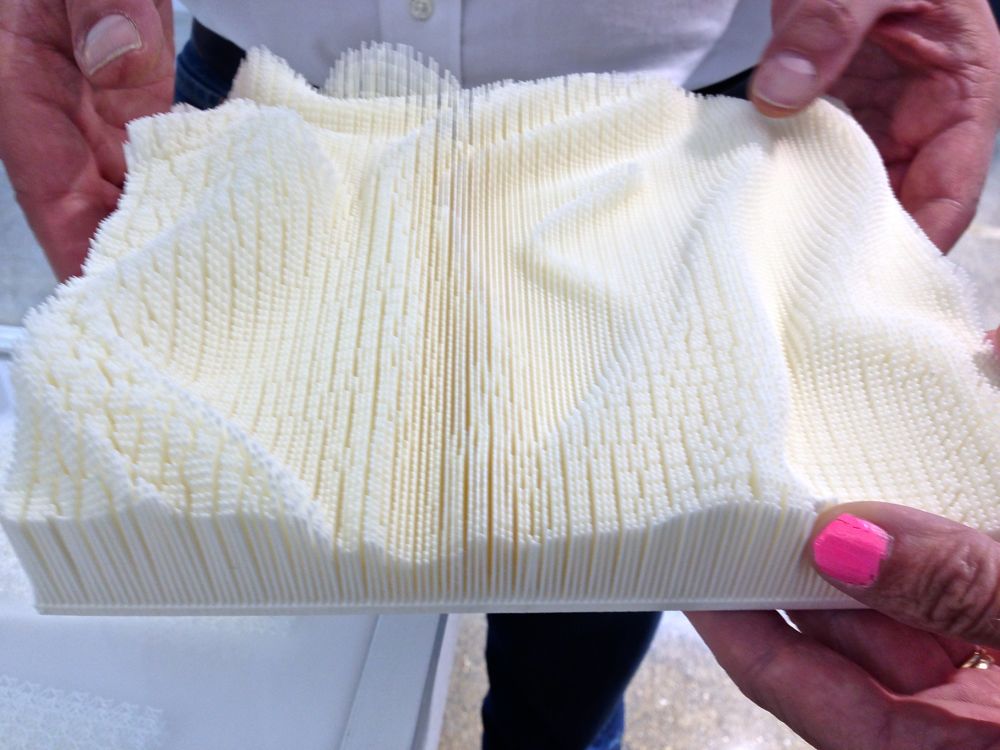
Here’s one experimental example: a 3D printed sheet with long, thin tendrils of nylon extending upwards. It looks rough or even dangerous, but in fact the nylon is sufficiently flexible to create an incredibly soft feeling when touched.
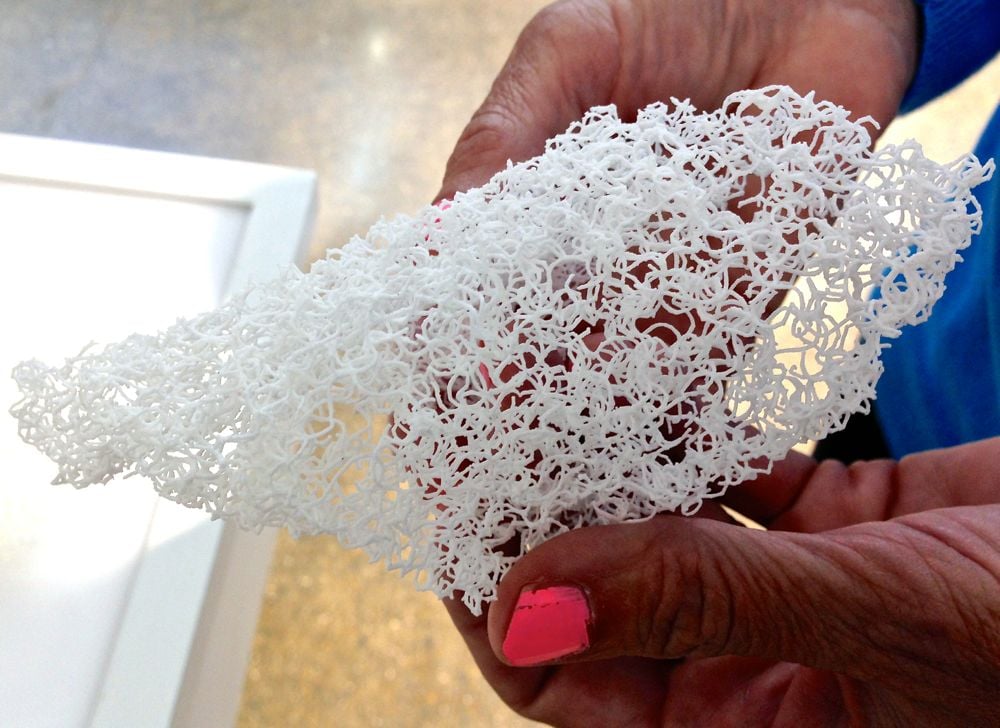
Another experimental print yields a highly flexible material reminiscent of insulation. Remember, this is 3D printed solid nylon – no flexible materials have been used.
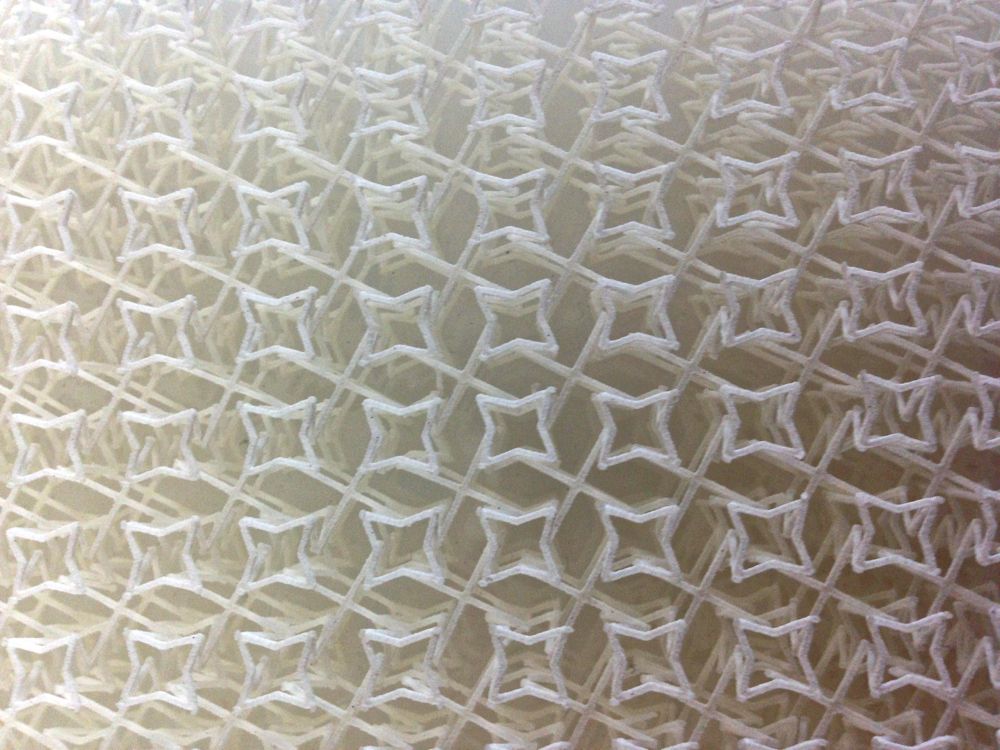
The experiment we were most impressed with is this fabric, shown in close detail. The microstructures are linked together like chain mail to form a fabric, but each link includes a flat “shield” overtop. The shields not only hide the links from view, but they also provide a smooth, touchable surface. It’s a highly flexible fabric that could definitely be part of a fashion designer’s outfit.
This is the sort of experimentation we like to see: pushing to the limits to explore the possibilities of the technology. Don’t print the same things you already have; make new things you could not make before.
Via D2W

